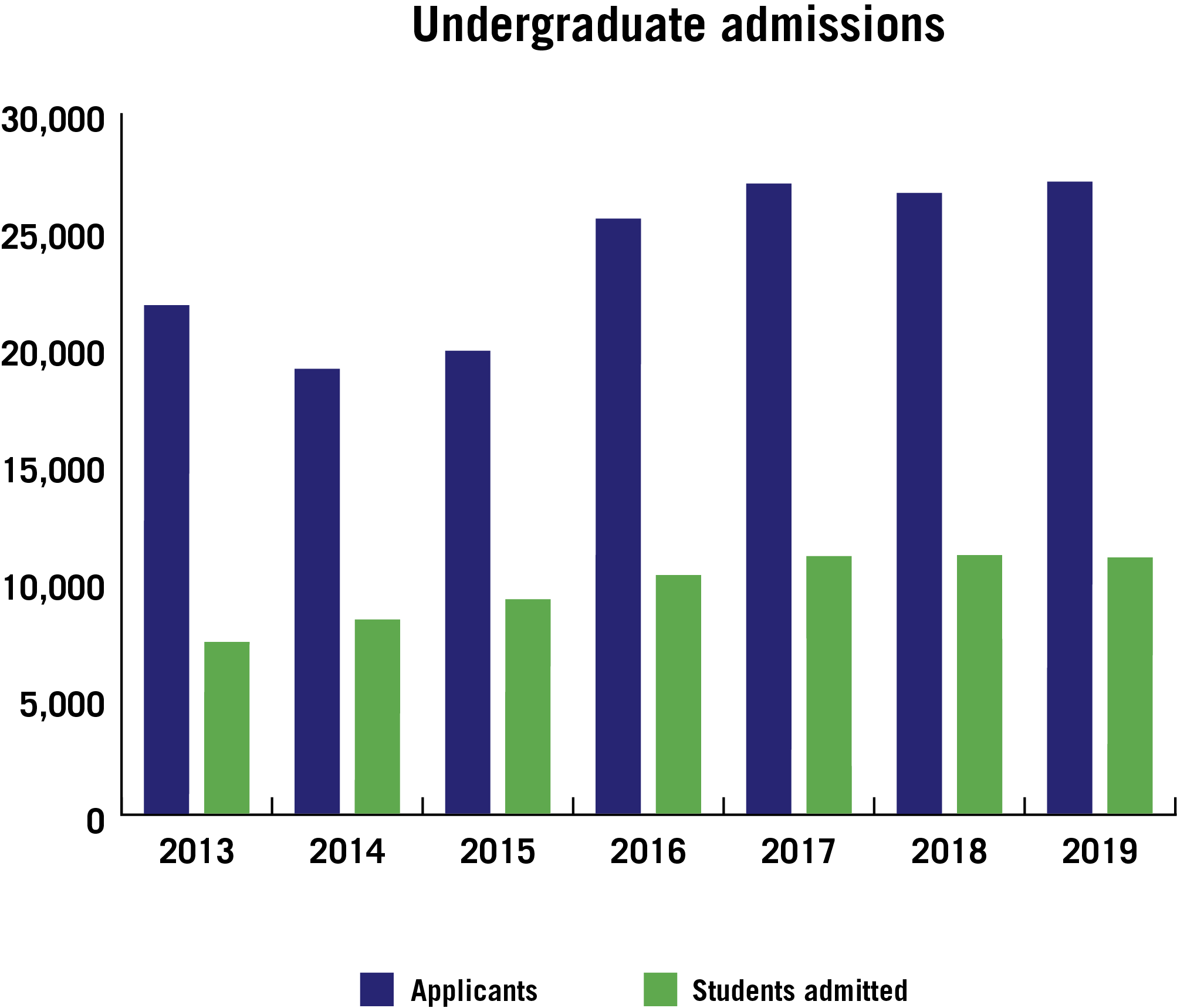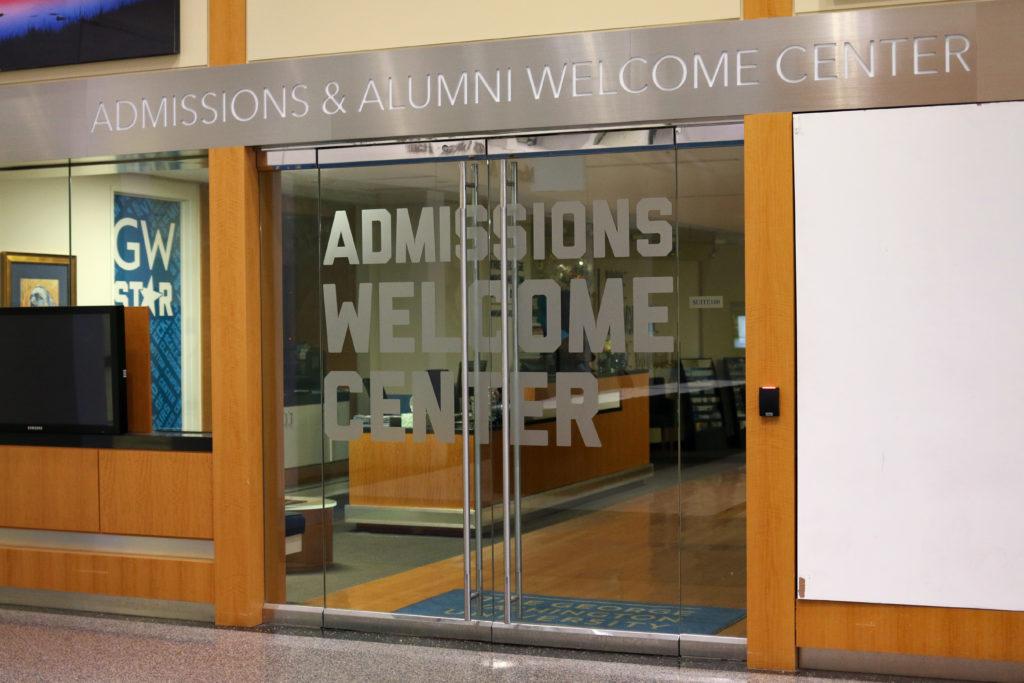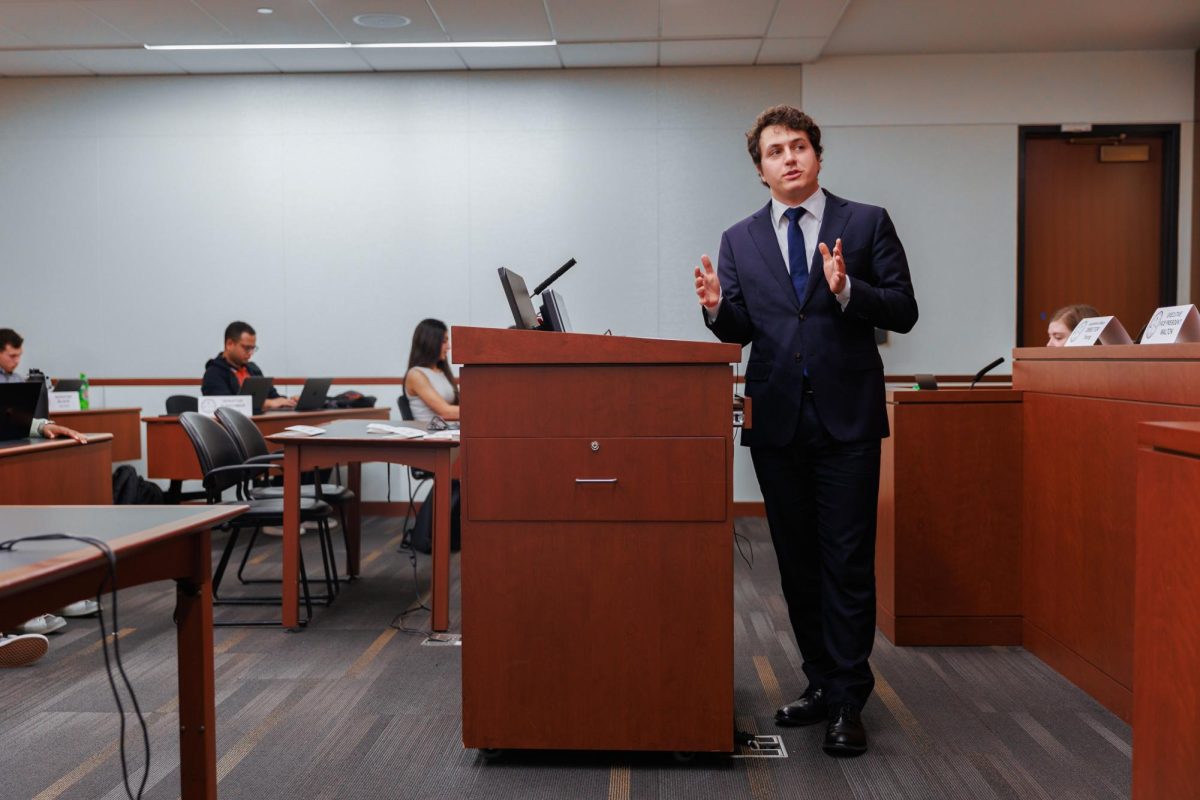After a two-year incline, the University’s admission rate dropped back down to about 41 percent this spring.
GW admitted about 11,000 students out of an applicant pool of about 27,070, bringing the acceptance rate down to an estimated 40.6 percent. Admissions experts said the roughly 1-percentage-point decline is likely the aftermath of an unexpectedly large freshman class this year and a slight uptick in the number of applications.
The acceptance rate stood at 41.8 percent last year, nearly 1 percentage point up from the previous year. The rate stooped to 40.2 percent in 2016 after the University admitted a record-high 45 percent of applicants the year before.
Laurie Koehler, the senior vice provost for enrollment and the student experience, declined to say exactly how many students were accepted to the Class of 2023, adding that the number will be released in the fall.

Alyssa Ilaria | Staff Designer
Source: Institutional data
“As has been the case for a number of years, our focus has not been on the admit rate but rather on enrolling an academically talented and diverse cohort of students,” she said. “This year, we received more applications than last and are aiming to enroll a smaller first-year class.”
She added that officials hope to admit some students off the waitlist this year. Officials could not accept any students off the list last year after roughly 2,800 students matriculated, forming the largest first-year class in the University’s history.
Admissions experts said the dip in the admit rate means officials are likely predicting a high yield rate – the percentage of accepted students who enroll – as applicants see GW as one of their top-choice schools. They said the downturn may boost GW’s national ranking, which has fallen in recent years in part because the University previously admitted about 33 percent of its applicants each year.
Cristiana Quinn, a counselor at College Admission Advisors, a company that offers high school students college application guidance, said students and parents used to view GW as a “high-cost school,” depressing the yield rate. She said the University has “done a good job” in the past few years awarding financial aid packages that incentivize admitted students to pick GW over other schools.
The financial aid pool hit $315 million last year, the fifth consecutive year that the budget has increased.
“Families understand that not only is there good need-based aid at GW, but there’s also good merit money for students to be able to get in the admissions process,” Quinn said.
She added that the reduced admission rate will help GW’s ranking in lists like U.S. News and World Report’s Best Colleges by making the University appear to be a more selective institution that competitive students and parents seek out.
Steven Goodman, an educational consultant at Top Colleges, said “significant changes” to “student support services” over the past several years have inspired applicants to apply to GW. The University went test-optional in 2015, leading to a surge in applications, and University President Thomas LeBlanc has made the student experience a top priority since coming to the University two years ago.
As a result, University admissions staff can admit fewer students to reach their target class size, he said.
“Because it’s a lower rate, the GW admissions office is confident that a larger percentage of those students will accept the offer that GW just made,” he said.
Goodman added that admissions officials likely expect GW’s yield rate to stay on par with last year’s number, when an unexpectedly high number of students accepted their admission offers.
“GW is concerned about maintaining the numbers because you want to fill your class, but you don’t want to go over and you don’t want to go under,” he said. “If you feel confident that the students are going to come based on what you’re offering – and the best indication of that is the year before – then that is exactly why that has an impact today.”
Paige Morse and Lizzie Mintz contributed reporting.





